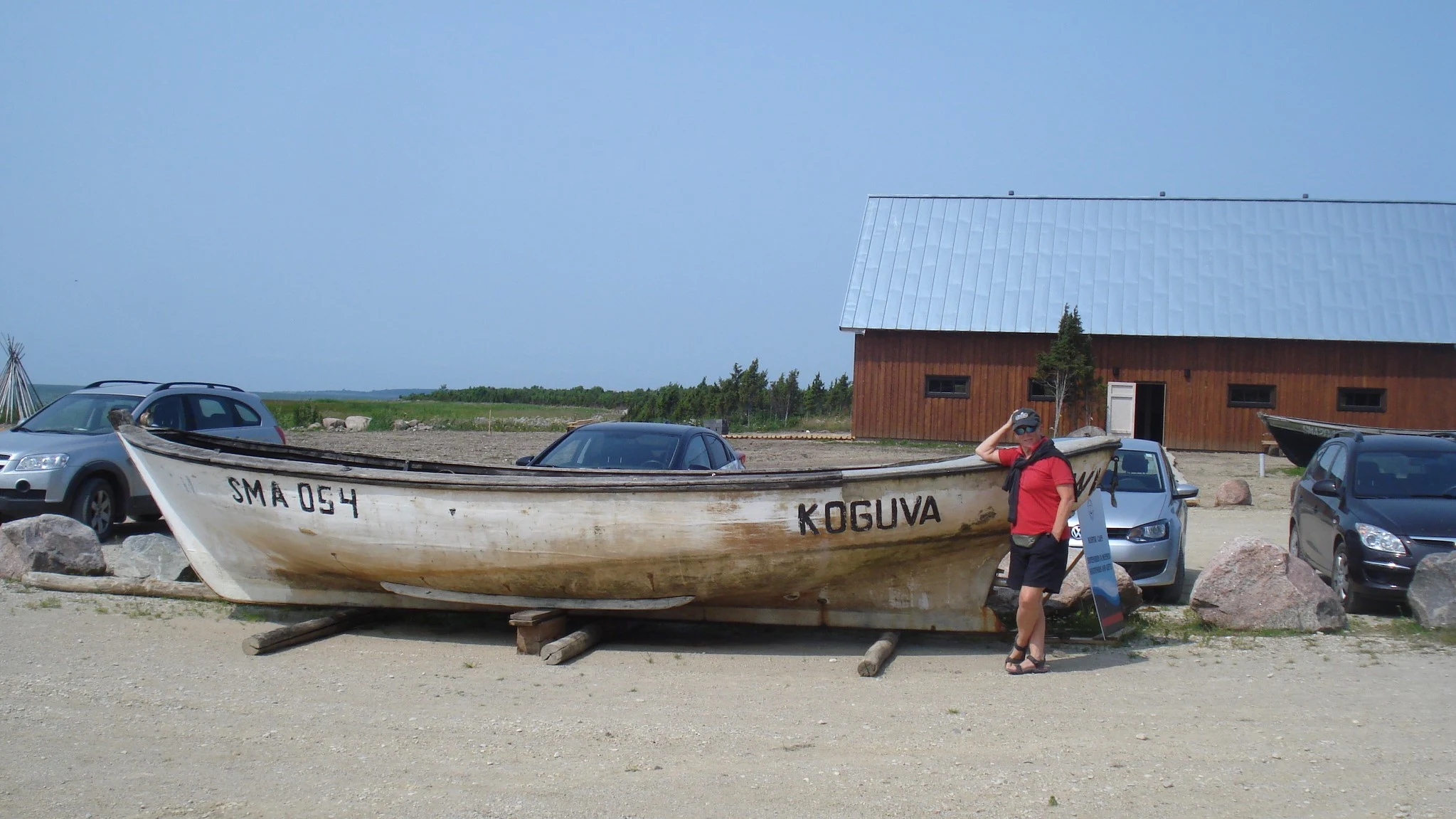We are on a road-trip around north-eastern Europe in our motorhome, but left it in Tallinn, the capital of Estonia, while we spent some time in Finland. After returning to Tallinn to collect it, we carried on with our road-trip, heading to Haapsalu on Estonia’s western coast where we visited a haunted castle.
 |
| Marg at the haunted Haapsalu Castle, Estonia |
Haapsalu Castle is an impressive 13th century ruin with a ghostly story. Legend has it that a monk hid a young girl in the castle who, when discovered, was buried in a castle wall. It is said that she now makes a ghostly appearance every August on a full moon and is known as the White Lady. We didn't see her, but were there in July, so who knows!
The township of Haapsalu is a seaside resort, famous for its spas and warm sea-water. It’s a picturesque old town with narrow streets, attractive wooden houses, historic fishermen’s cottages, a wonderful café-culture, and lots of beautiful hand-woven lace shawls.
Leaving Haapsalu, we continued south to Virtsu, a port town of 539 people on Estonia’s western coast. We were there to catch a car ferry to Muhu Island in the Baltic Sea. We bought a ferry ticket, had a short wait, and a quick 25-minute ride later we drove off the ferry to explore some of Muhu’s historic fishing villages.
Our first stop was the lovely village of Koguva, located at the top corner of the island. Mahu Island is over 440 million years old and people have been living there since 2500 BC, so we visited the open-air museum in Koguva to learn more about its history. We found it very interesting.
The museum has about 100 buildings dating from 1880 to 1930, that still house around 30 people. It is known as the best-preserved historic village grouping in Estonia. The village of Koguva is full of ancient thatched houses built of logs put together without nails, or of dry-stone walls.
Leaving Koguva, we drove off Mahu Island over a very long causeway, to Saaremaa Island. It has been inhabited for around 8,000 years and is Estonia’s biggest island. On Saaremaa we drove a bit of a circular route to visit some of the main sights.
 |
| Leigh and the historic windmills of Angla, Saaremaa Island, Estonia |
Our first stop on Saaremaa was the village of Angla where we saw some ancient windmills (Angla tuulikud). These are the last remaining traditional wooden windmills that once covered this whole windswept island.
We also visited the Karja Church, Saaremaa's smallest church. It dates from the Middle Ages, and is famous for its decorative ceiling showing magical symbols such as the three-legged triskele (a devil that looks between its legs), a pentagram, stone sculptures, frescoes, and other symbols; many of pagan origin.
Our next stop was the Kaali Meteorite craters, a group of nine craters made by a falling meteorite over 7,500 years ago. It resulted in a huge amount of damage that has been compared to an atomic bomb explosion.
The main crater is 110 metres in diameter and 22 metres deep. It is full of water and known as Lake Kaali. The bottom sediment layers are about six meters thick and up to 4 000 years old. It was an interesting stop.
 |
| Marg in Kuressaare on Saaremaa Island, Estonia |
By the end of the day, we had reached Kuressaare, the capital of Saaremaa Island with a population of around 15,000. It is a lovely village full of old wooden houses and shops and cobbled streets, all focussed on the sea.
We stayed at a camping ground in nearby Tehumardi and regularly caught the bus into Kuressaare. We had tea in Kuressaare one night, but unfortunately missed the last bus back to Tehumardi at 8 pm – we were available on time, but waiting at the wrong stop - so we had to get a taxi back for 20 euro – ouch!!!
We loved our time in Kuressaare and visited many of the local sights, including the 13th century Episcopal castle, the only Baltic medieval fortress preserved in its entirety. We also visited Kuressaare’s lovely Nordic-Baroque town hall, and several other historic buildings in the village.
We went for several cycle rides outside the village, and on one trip, visited an impressive local monument to WWII that stands 21 meters high. We also enjoyed a ride around the back roads to the tiny settlement of Lomala Harbour, where we visited an interesting display on the history of fishing in the area.
After a lovely time on Saaremaa Island, we returned to Mahu Island to catch the ferry back to Virtsu on mainland Estonia. From Virtsu, we drove south to Pärnu, a lovely seaside town on the Pärnu River. We found it to be a vibrant little town with many restaurants, cafes and galleries, and attractive architecture.
We walked around the town for ages enjoying the town centre and Town Hall, its several churches, the Kuningavärav (King’s Gates), and other sights. It was different to most of the other towns we had seen in Estonia, being more like the capital Tallinn.
Later, we made our way down Pärnu’s beach. It was crowded, but had clean water and pristine white sands that seemed to stretch forever along the Gulf of Riga.
Pärnu was our last stop in Estonia. We enjoyed our time in Estonia and it appears to have come a long way since its Soviet days. The people we met seemed restrained but were very friendly once we got chatting. Our next stop is in Latvia, but you can read about that in the next blog.
This blog describes part of our 6-month motorhome trip around north-eastern Europe, which began in Prague.





